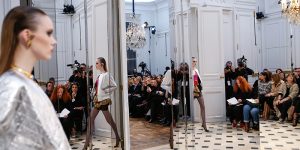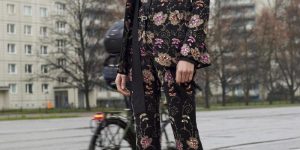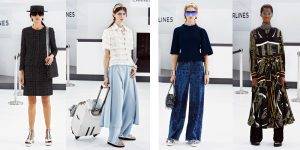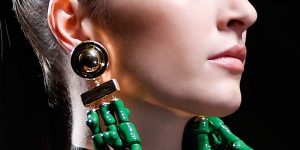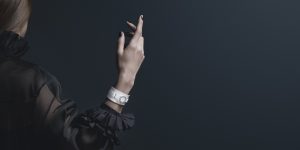Chanel Classic Flap Bag: Immortalizing Pop Culture
The emoji-fication of our rapid, turbulent times is immortalized in Chanel’s cheeky classic flap bag.
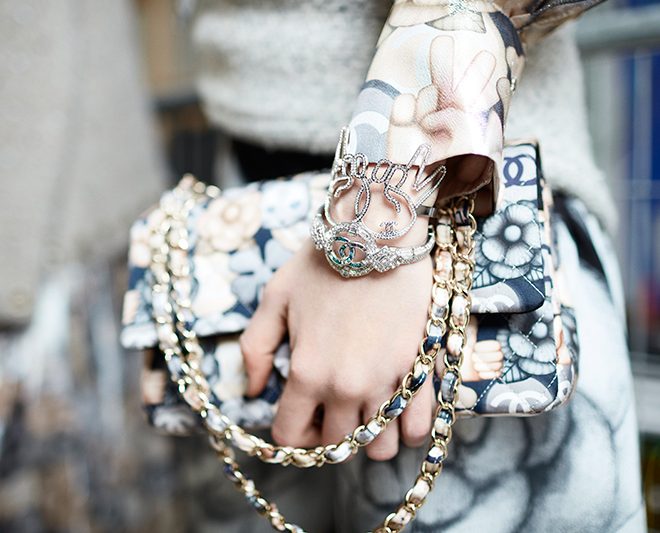
If there’s anything we can’t buy, it’s time. Thank goodness for online shopping, same-day delivery, concierge services and 7-Eleven, but it’s been a while since those godsends were created. Today’s innovators, who recognize the potential of efficiency and time savings that technology promises, are constantly outdoing themselves to satiate our boredom and laziness – through entertainment.
Look at the lingua franca du jour – emoji – and how thoroughly entertaining that is!
Take, for instance, Emoji Dick, a full translation of Herman Melville’s Moby Dick into emoji. It is the full utilization of concentrated intelligence at its most redundant — but hey, at least it is fun. After all, doesn’t fun reign supreme in this era of hyper-consumerism?
While the probability of sustaining an actual conversation entirely in emoji is close to 0%, and the risk of messages being lost in translation is very high, it is still amusing. In fact, the guessing game adds to its allure. If a peach emoji is equivalent to buttocks, you can assume what an eggplant means! Emoji, being the semiotic marvel that it is, would have made a tough intellectual exercise even for Baudrillard, Saussure or Barthes. But somehow, we can navigate an entire row of random symbols.
But this seemingly trivial pursuit of sign language, as it were, has deeper cultural significance, and what better example to illustrate this point than Kim Kardashian and her peculiar world of Kimoji? As overexposed as she is, this woman is the epitomic product of the zeitgeist. Thanks to her reality TV show, Keeping Up with the Kardashians, we even know what event prompted a now-immortal face of a crying Kim. (We’re still miffed that Kimoji doesn’t work like it should on WhatsApp.)
So. What has all this got to do with fashion? Like an emoji, a recognizable silhouette speaks of universality. While your mum may not understand the significance of a donut and banana emoji put together, she’ll know a Chanel bag when she sees one. There’s no doubt that Chanel is part of pop culture. Surprisingly, it was underplayed this season. Even the show’s set design – usually an elaborate affair like Chanel Airlines from Spring 2016, the casino set for Fall 2015 couture and the epic supermarket from Fall 2014 – was understated. Interestingly, the absence of a showstopping set reinforced the power of the brand; the collection didn’t feel gimmicky at all.
The essence of this symbolization is distilled in this season’s flap bag, which is heavily adorned with brand-specific emoji: Choupette, Chanel creative director, Karl Lagerfeld’s cat; the Camelia, the house’s signature flower; and the Chanel logo’s interlocking C’s. These are intermingled with standard emoji, including the thumbs-up icon, the peace sign and the four-leaf clover. It is a beautiful mix. Few houses are able to parade the iconography of pop culture so efficiently and effectively.
What Chanel has done is virtually instant art. It is funny how an object becomes art in much less time when you take something that’s already manufactured and then give it new perspective. That’s what Marcel Duchamp recogniszed with his readymades. He took a urinal, tilted it to the right and confined it to a glass box. Bam! Art! And that’s really what embracing post-modernism is about: we’re living in an age of recycling the past and glorifying the now.
It is true, you can’t buy time, but you can buy a Chanel bag.
This article was first published in L’Officiel Singapore




